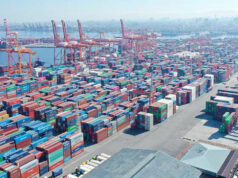
THE PHILIPPINES missed its targets for 2022 core development indicators like poverty reduction, food inflation, and global innovation ranking, according to a report from the Philippine Statistics Authority (PSA).
According to the Statistical Indicators on Philippine Development 2022 report released on Monday, poverty incidence in 2022 was 18.1%, which exceeded the Philippine Development Plan target range of 15.5-17.5%.
Food inflation in 2022 was 6.1%, well off the 2-4% target. Meanwhile the Philippine ranking in the global innovation index was 59th out of 132 economies, missing the goal of landing in the top third of the rankings.
The PSA also estimated that the Philippines is likely to miss its 2023 development targets on nearly 40% of the 493 indicators being tracked.
Of the core indicators where targets were met, gross domestic product (GDP) expanded 7.6% in 2022, within the 6.5-7.5% target range. Gross national income per capita rose 8.5%, well above the 5-6% growth target.
The unemployment rate, youth unemployment, and underemployment rate in 2022 dropped to 5.4% (against a target of 7-9%), 11.5% (against a 20.5-22.5% target), and 15% (against a 15.5-17.5% target), respectively.
Subsistence incidence, or the proportion of Filipinos whose income is not enough to meet their basic food needs, fell by 5.9%, within the 5-7% target.
The PSA officially classifies 39.4% of the 493 indicators as showing a “low likelihood” of being achieved this year. Four out of 15 categories of indicator were classified as having at least 50% of their indicators turning in “average to good” performance. Meanwhile, 11 categories were estimated to have at least 50% of their indicators turn in “poor” performances.
Among the categories classified as having an average chance of achieving their targets are macroeconomy, the demographic dividend, industry and services, and science and technology.
“Maintaining the primary expenditure to GDP ratio above baseline and manageable outstanding National Government (NG) debt stock to GDP ratio were successful with an additional 3.2 percentage points and 0.9 percentage point, respectively, compared to their respective end goal targets. In addition, locally sourced local government unit (LGU) income increased by P278.60 billion in 2022, way beyond the target of P159.40 billion,” the PSA said.
Meanwhile, the indicator categories classified as having “poor” likelihood of hitting their targets were human capital development, environment, governance, competitiveness, culture and values, social protection, agriculture, forestry, and fisheries, infrastructure, overseas Filipino workers, shelter and housing, and justice. — Mariedel Irish U. Catilogo



